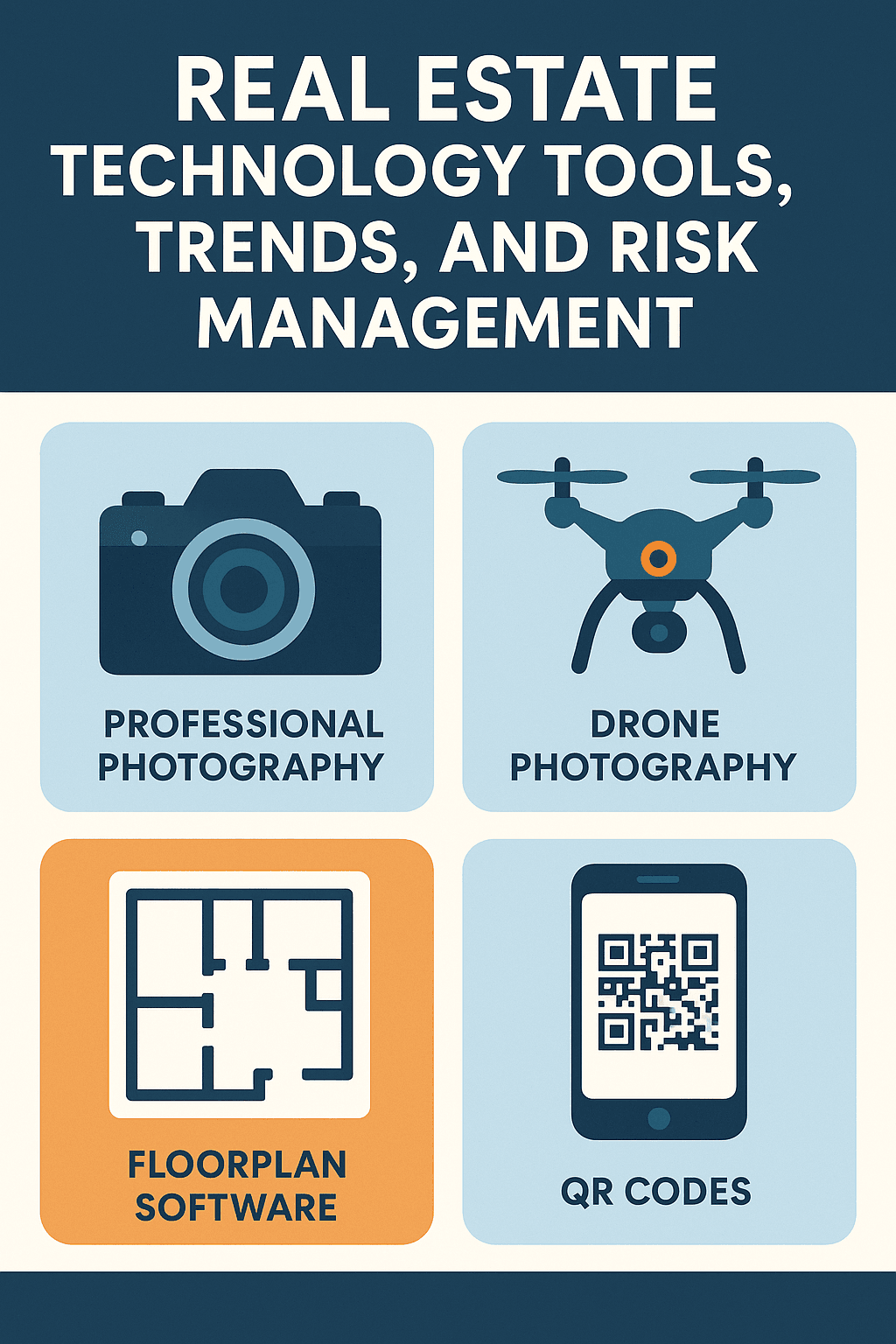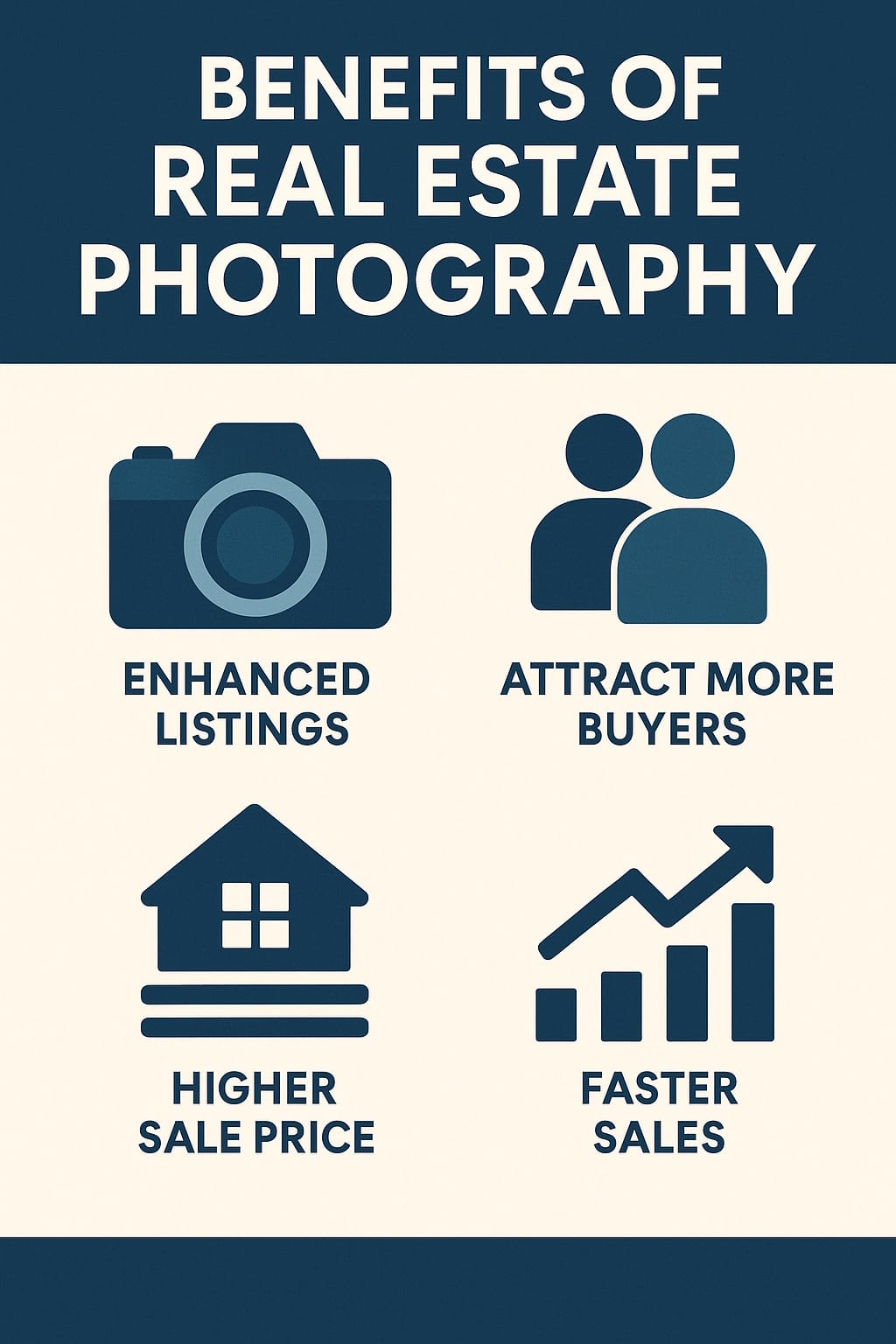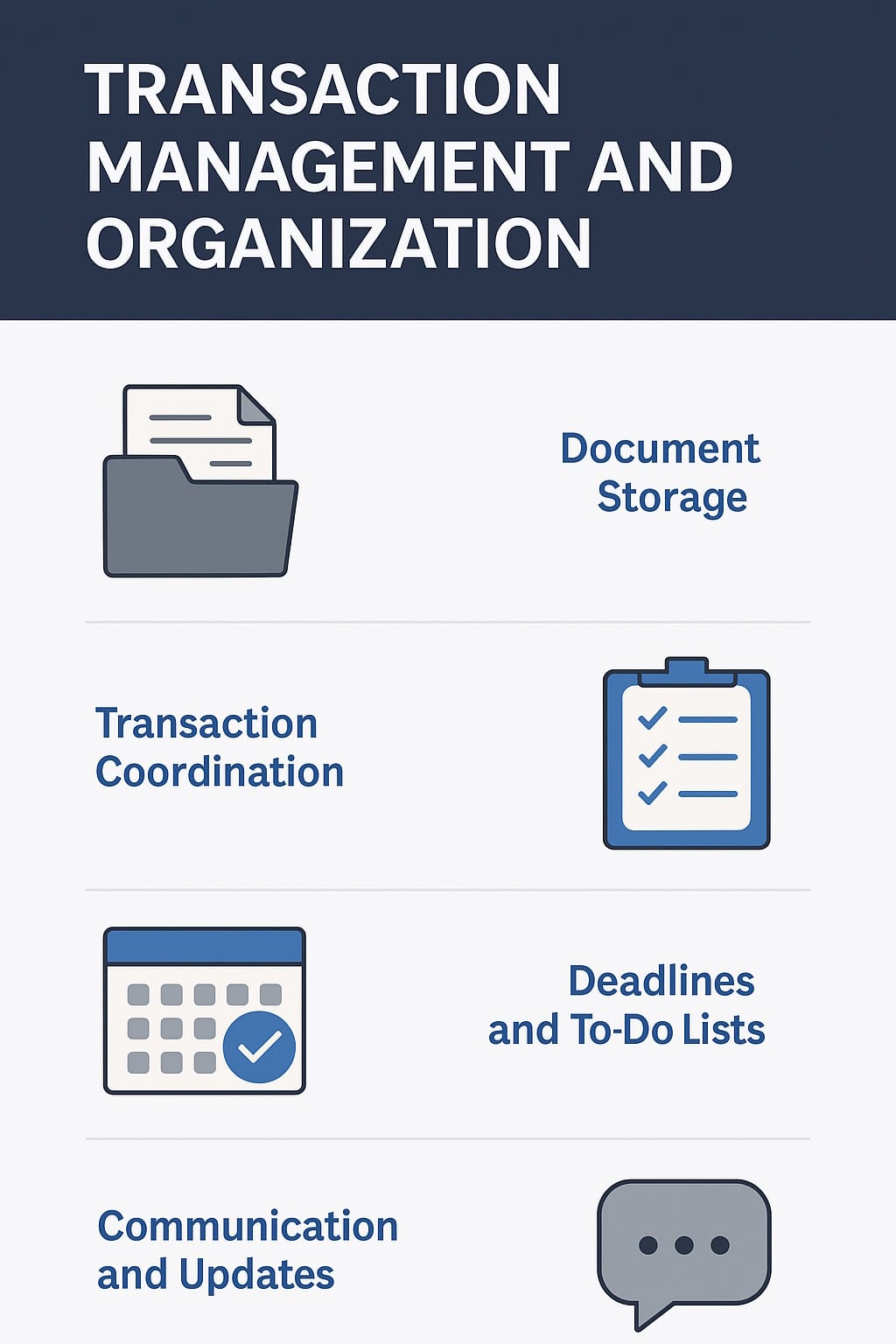TLDR
Technology has become one of the most important drivers of success in real estate. It’s no longer enough to just put a sign in the yard or upload a listing to the MLS — today’s buyers and sellers expect a seamless, digital-first experience. When used strategically, technology can save agents hours of work, create better client experiences, and close deals faster. When ignored or misused, it can hurt relationships, create security risks, and give your competitors an edge.
This comprehensive guide explores how modern real estate professionals can leverage technology in every stage of their business — from marketing and lead generation to transaction management and data protection — all while staying focused on what matters most: building trust and strong client relationships.

Technology Tools for Sellers
Professional Photos and Virtual Media
According to the National Association of REALTORS®, 87% of buyers say listing photos are one of the most important factors when deciding which homes to view. Poor-quality images can sabotage your marketing efforts before a potential buyer even books a showing. Professional photography is a relatively small investment that can result in faster sales and higher offers. Even better, the resulting portfolio of high-quality photos can be used as examples during listing presentations to win future business.
Beyond still photography, consider adding 3D virtual tours and video walkthroughs to your marketing mix. Platforms like Matterport and Ricoh360 Tours allow buyers to “walk” through a property online, experiencing the layout and flow in a way photos alone can’t capture. Video walkthroughs can be filmed with a smartphone and a gimbal or outsourced to a professional videographer. These tools are especially valuable for relocation clients or busy buyers who may not be able to attend every showing in person.
Drone Photography and Aerial Video
Drones have become a game-changer in real estate marketing. They allow you to showcase a property’s surroundings — acreage, waterfront, nearby parks, or unique neighborhood features — in a way that no ground-level photo can match. For high-end or luxury listings, aerial video can create a cinematic feel that draws in serious buyers. Make sure your drone operator is FAA-certified and compliant with commercial flight rules.
Floorplan Software
Buyers love floorplans because they show how a home is laid out and whether the spaces fit their lifestyle. Software such as TruPlace, RoomSketcher, or Floorplan Visuals can create professional 2D and 3D floorplans. These can be added to your MLS listing, shared on social media, or even printed for open houses. If a professional floorplan isn’t available, you can create one yourself using a laser measure and DIY software — just be sure to disclose that measurements are approximate.
Smarter Yard Signs
Yard signs aren’t going anywhere, but they’ve evolved. Adding a QR code or “text for info” option allows buyers to instantly access property details from their phones. Many modern sign systems alert the listing agent when someone scans the code or requests info, giving you an opportunity to follow up while the lead is still warm.
Online and Social Media Advertising
Print classifieds have largely been replaced by targeted online ads. Platforms like Facebook, Instagram, and Google Ads allow you to reach buyers based on location, interests, or even recent home search activity. Retargeting campaigns can “follow” potential buyers across the internet, reminding them about your listing after they leave your site.
When running ads, set clear goals, measure your results with tools like Google Analytics, and adjust your strategy based on data rather than guesswork. Building a strong presence across multiple platforms can expand your reach, but it’s best to start small and scale up once you have a system.

Technology Tools for Buyers
Buyer Representation Agreements
Buyer representation agreements protect your time and allow you to provide a higher level of service. Setting this expectation upfront helps secure client loyalty and makes sure you are compensated for your work. Adding a short note in your email signature or website stating that you work exclusively with signed clients helps communicate this policy professionally.
Mortgage and Loan Tools
Encouraging buyers to get pre-qualified is still Real Estate 101, but technology has made it easier than ever. Mobile mortgage calculator apps can help buyers quickly estimate monthly payments based on list price, down payment, and interest rate. Loan comparison tools take it a step further by allowing buyers to compare multiple lenders side by side — giving them insight into interest rates, fees, and total loan costs.
Showing and Routing Technology
Before scheduling showings, use tools like Google Earth to get a 3D look at a property and its surroundings. This can prevent wasted trips to homes that may be next to noisy industrial sites, busy roads, or other undesirable features. Once buyers are ready to tour, routing software like Route4Me or SpeedyRoute can plan the most efficient path, saving everyone time and fuel.
Communication Tools
MLS auto-feeds are helpful, but they shouldn’t replace personalized communication. Set up hot sheets to track price reductions and status changes for properties your buyers are interested in. Send quick updates via text message when new homes hit the market — speed can make the difference in multiple-offer situations. Tools like Boomerang (for Gmail follow-ups), MightyText, and CircleBack can make communication smoother and ensure no lead slips through the cracks.
Neighborhood and School Research
Instead of sharing your personal opinion on neighborhoods — which could lead to fair housing issues — direct buyers to objective third-party sources. Sites like Homefacts, NeighborhoodScout, and Walk Score provide information about amenities, transportation, and local demographics. For school ratings, send buyers to GreatSchools.org so they can research districts independently.

Transaction Management and Organization
Digital Documents and E-Signatures
Platforms like DocuSign, HelloSign, and Dotloop have made it possible to send, sign, and store documents securely online. E-signatures are legally valid under the ESIGN Act and can save days in a transaction timeline. Most systems allow you to track document status, send reminders, and create a secure audit trail.
CRM Systems
A Customer Relationship Management (CRM) system is the backbone of a modern real estate business. It allows you to store contact details, log communications, and segment your database for targeted follow-up campaigns. Many CRMs also integrate with MLS feeds, email, and even texting platforms, creating a centralized hub for your lead generation and follow-up efforts.
Cloud Storage
Cloud-based storage tools like Google Drive or Dropbox keep all your transaction documents accessible from anywhere. Organize folders by client or by transaction stage and set permissions to control who can view or edit specific documents. This makes collaboration with clients, lenders, and escrow officers much smoother.
Risk Management and Security
With convenience comes risk. Phishing scams, wire fraud, and email spoofing are on the rise. Protecting your clients’ data is critical to maintaining their trust — and your reputation.
Best practices include:
Using strong, unique passwords and enabling two-factor authentication.
Verifying wire transfer instructions verbally before funds are sent.
Avoiding public Wi-Fi for transaction-related work.
Encrypting sensitive documents and using secure sharing platforms.
Staying updated on cybersecurity threats and educating clients about common scams.
Key Takeaways
Invest in professional photos, video, and floorplans to make your listings stand out.
Adopt QR codes, text alerts, and online ads to capture buyer interest quickly.
Use buyer representation agreements to protect your time and deliver better service.
Leverage routing and research tools to save time and help buyers make informed decisions.
Embrace CRM, cloud storage, and e-signatures to streamline your business.
Prioritize cybersecurity to keep client data safe and maintain trust.
